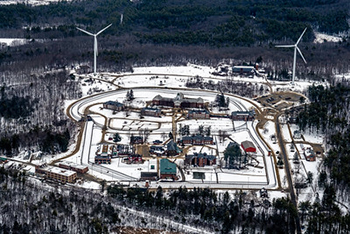In this section, Prof. Ariel White describes some of the key concepts and themes she and her students discussed in 17.271 Mass Incarceration in the United States.

Aerial view of the North Central Correctional Institute in Gardner, Massachusetts. (Image courtesy of backseatpilot. License: CC BY-NC-SA.)
First, I wanted to make sure students had a basic descriptive understanding of what people mean when they say “mass incarceration.” The modern United States is an extreme outlier in its use of incarceration, both compared to the rest of the world and compared to our own history, and I wanted to give students the resources to understand what that scale of incarceration means both at a high level and for individual people caught up in it.
Another big theme we kept revisiting over the course of the semester is that there isn’t a unitary criminal legal system in the US. There are many, many different systems run by various jurisdictions. Although federal policies around policing and criminal sentencing get a lot of public attention, a lot of important things happen at the state and local levels. The overwhelming majority of people who are incarcerated are held in state prisons or local jails, not in the federal system, and these jails and prisons are run by a patchwork of state, county, and municipal governments. Understanding this point prepares students to think more carefully about what specific reform proposals could hope to accomplish, and where political pressure could make a difference.
"It’s very hard to understand the current system of incarceration in the US without thinking about violence and perceptions of violence."
Finally, we talked a lot about violence. Violence shapes the lives of many people who pass through the criminal legal system, both before and often during incarceration. Most people in prison are serving sentences for convictions classified as violent crimes. And the (often racialized) specter of violent crime shapes public discourse about policing, prosecution, and sentencing in profound ways. It’s very hard to understand the current system of incarceration in the US, much less imagine major changes to that system, without thinking about violence and perceptions of violence.










